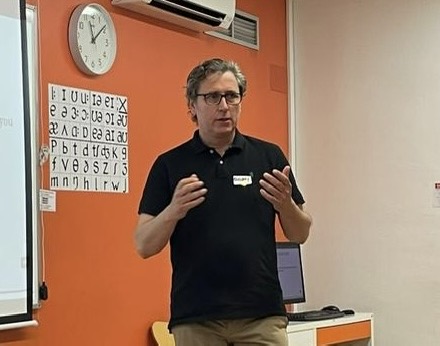Speed is not the same as fluency
- Barnaby Griffiths

- May 19, 2020
- 2 min read
Updated: May 21, 2020
When we communicate, we can talk at varying speeds. Obviously, we can also control this. The best public communicators speak fluently, but not fast.

So, think about what speed you speak at in the following situations, taking 5 to be the fastest and 1 the slowest:
- in a social situation with friends or family
- in a work meeting with colleagues
- in a lecture to local students
- in a casual conversation with local students in the cafeteria
- in a lecture to international students
- in a casual conversation with international students in the cafeteria
What do you think? Would you talk at the same speed? I like to use this reflection exercise with my Spanish and Catalan-speaking university professor clients. Why?
Because the largest obstacle to professors communicating effectively with their international students is simply the speed at which they talk.
All that hard work improving your English pronunciation, grammar and vocabulary is wasted if you can’t get the speed of delivery right. Speak too fast in a lecture and you are not allowing yourself to be as accurate with language as you can be, and this creates the following vicious circle:
Your students miss a word or two of what you’re saying
> they then miss the next part still trying to figure out what you just said
> they then get lost
> they don’t understand the message
> they switch off
> they become restless
> their behaviour and/or attitude towards your lectures changes
As you can see, the speed at which you talk is a fundamental element of communication that you need to master.
So back to our exercise. Below you will find my suggested answers, though yours may differ:
- in a social situation with friends or family = 5
- in a work meeting with colleagues = 4
- in a lecture to local students = 3 (although 4 is often not a problem)
- in a casual conversation with local students in the cafeteria in English = 4
- in a lecture to international students in English = 3
- in a casual conversation with international students in the cafeteria = 3 or 4, depending on your level of English
What about 1 and 2? Well speed 1 is reserved for when we inform someone of a very delicate matter, and therefore inappropriate in most communicative situations, and 2 is generally when we repeat something (often impatiently) because the listener has not understood. In other words, the ideal speed at which to lecture is 3, and this is absolutely fundamental when lecturing international students.
The good news is, this can be fixed. It is an issue that I would address immediately as a language coach, although you can go some way to doing this yourself by monitoring the speed at which you are speaking and telling yourself to slow down 10%, 20%, 30%.

You can effectively rehearse this with the help of a coach, but it is always important to SELF-MONITOR and be aware of how fast you are talking. When you notice yourself going faster (which happens when we get more engrossed in the topic), then CONSCIOUSLY SLOW DOWN. It will help you overcome the pitfalls of the speed vs accuracy dichotomy, an issue I will address in the next post.

Comments